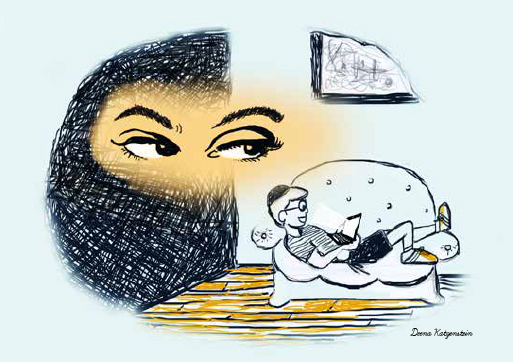Your Mind on Social Media

Ever post a status update on Facebook and feel distraught when no one “likes” or comments on it? Does the prospect of being misunderstood on Twitter keep you from participating in the digital dialogue? When you see pictures of friends on Instagram, do you believe your life pales in comparison to theirs?
If this sounds familiar (and research and recent popular media suggest it’s likely), then you have fallen victim to digitally-induced “cognitive distortions.” A cognitive distortion is basically a mind trick, a way of filling in information gaps with assumptions and opinions. These thoughts occur consciously (that is, within your awareness), come to mind automatically and feel true, even when they’re not. Distorted beliefs can involve overgeneralizing, thinking in all-or-nothing terms or jumping to conclusions.
Let’s take the example of seeing others’ photos of happy moments on your social media stream. This might make you think, “Everybody else is doing more interesting things with their time. They seem happier than me. My life is terrible.”
The bad news: Distorted thoughts like these can lead to any number of negative emotions, such as envy or sadness. They may result in unhealthy behaviors that can worsen your mood — like avoiding contact with friends who “seem happier” or repeatedly checking for updates of people doing “more interesting things.”
The good news: To have biased thought processes is simply a symptom of being human. Our brains are wired to take in multiple cues simultaneously, synthesize information and quickly output a thought. Mostly, this brain function serves us well, helping with essential mental multi-tasking. But sometimes, as in the case with cognitive distortions, the process traps us in unhealthy thought patterns.
The best news: You can, with practice and patience, break free. By thinking critically about your thinking, you can recognize and challenge thoughts that might not be worth believing. To rewire your mental hard drive there is a tried-and-true code to follow, a process called “cognitive restructuring”:
• Clearly identify the thought that is causing you trouble. What exactly is at the heart of the matter? In the example above, the essence of the problem might be the thought, “My life is terrible.”
• Determine whether or not your thinking is off-kilter. How does this thought make you feel? If the answer is lousy, then that’s a clue of a possibly distorted thought. If you were to tell a trusted loved one what you were thinking, would they agree with you? What about the very friend whose picture or post you are envying? If their response might be some version of “What are you talking about? You have so many great things going for you!” then you’ve correctly identified a cognitive distortion.
• Ask yourself, “Why do I believe this?” It’s important to know why you think what you think. In this case, pictures of your friend’s recent trip to a place you would love to go to (if you could) might be supporting evidence for your thought. Or you might believe your life is terrible because it’s been hard to find a new job or you’ve been through a recent breakup. Maybe your reason for this belief is simply that “nothing new” has happened; your work, relationships and career are stable, without drama but also without novelty.
• Look for evidence to the contrary. Maybe your initial thought is ignoring some of the not-so-terrible parts of your life, like how much fun you had out at dinner with friends recently or how much you are enjoying the novel you’re reading. Or perhaps you are losing sight of more subtle truths: Do social media updates capture the fullness of anyone’s life experiences, positive, negative and neutral? Do they capture the fullness of yours? Your feed is biased and so are your friends’.
This is the hardest step. It forces you to stretch beyond your automatic mental map and to forge novel pathways or connections between thoughts. If you get stuck, ask yourself what you would tell a friend in your position.
• Find equilibrium by restating the belief in a more balanced way. Distinct from an affirmation like, “My life is amazing!” (a similarly-biased belief), this final step is about synthesizing what you’ve learned in the previous steps in a meaningful, more reasoned way. For example: “Even though my life is not super exciting today, that does not mean it’s awful; I had a great time last week with friends and have some things on the horizon that I’m really looking forward to.” An alternate version: “My life feels lacking because I am comparing it to others using a biased sliver of information, not because it is actually lacking.”
Changing your thought patterns is hard work, but if you find yourself thinking that changing your thinking is impossible, then that is the thought you should start with challenging first! Look for examples of ways you have already changed your thinking — maybe in your politics, relationships or career — and I guarantee you will learn about your innate capacity to take charge and change your mind for the better.
By Deborah R. Glasofer, Ph.D.
As seen on www.hufffingtonpost.com


